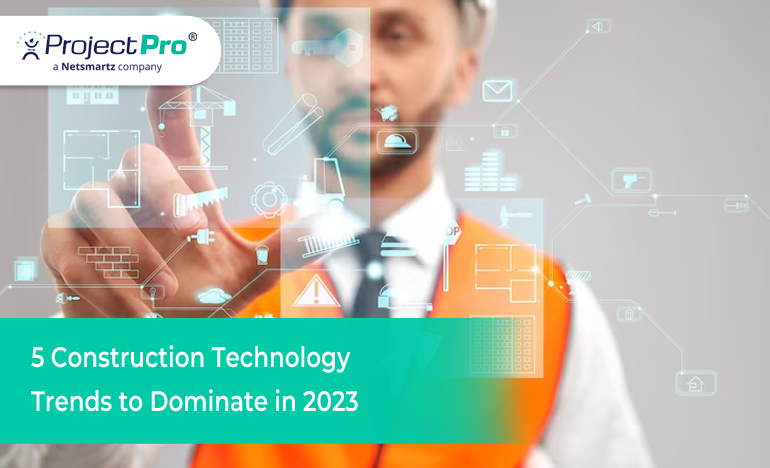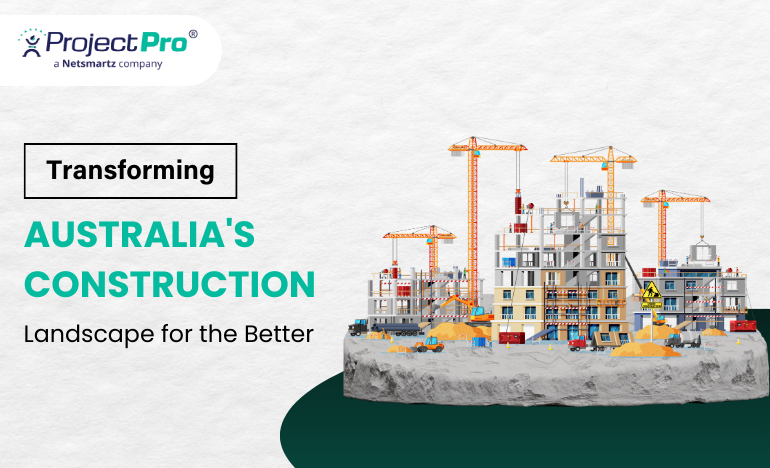5 Construction Technology Trends that you Should Look for in 2023

As per a report by Mckinsey, investment tech in construction has doubled since 2013—which was $25billion.
Over the period, major shifts in the supply chain imposed several challenges for the construction industry every year, and 2022 was no exception.
As we enter 2023, construction companies are planning to begin this year by adapting to big changes in the industry.
Supply chains, labor supply, materials costs, inflation, government spending — these have been prominent stories since the pandemic, and we’ll gain insights into what happens when some construction trends overlap.
But do you know? Digging Deeper, hosted by ForConstructionPros.com, released podcasts emphasizing the headwinds that contractors witnessed in 2022 and the future trends. The speaker said, “ There’s an overwhelming need for speed and pace in construction.”
And only technology empowers construction contractors to push their boundaries and be more efficient.
Let’s get into the five biggest construction trends that will affect the industry in 2023 and beyond.
1. Drones
All businesses are discovering a way to make the most of drone technology to stay consistent and efficient. Drones are highly advanced and powered by AI which enables them to stand apart.
While drones have already made their place in the construction industry, they are expected to take on a significant role thanks to recent improvements.
They offer you real-time aerial images, BIM capabilities, progress tracking, 3D scans, safety monitoring, inspections, and more.
These drones also gather a wealth of data to help project managers and architects make informed decisions and understand the project’s advancement.
The advantages of drone technology in the construction industry are constant. Over time, more potential benefits will likely be determined, making drones one of the most helpful technologies in the industry.
2. 3D Printing
3D printing is already being used in multiple industries as individuals recognize the extensive potential of this technology.
Engineers and designers can 3D print constructions from digital models and drafts. According to Allied market research, the use of 3D printing in construction is growing.
But 3D printing can go beyond making a mini model of a building. Contractors can use 3D printing for building components like cement molds and steel nodes.
The ability to convert a file into a 3D object while being on a construction site helps to improve work efficiency. Workers don’t have to stop for suppliers to deliver materials and can manage items as needed.
As per Mckinsey's report, 3D printing in the construction industry will keep growing for years along with other technologies. It seems like 3D printing is entering the construction world slowly, but it’s gearing up.
3. Green Technology
If we get into greener construction technology, this will be a shift toward more environmentally-friendly practices. Many construction companies opt for more sustainable practices, but it’s also evolving in multiple places.
New and creative tools help architects design more energy-efficient buildings that are easier to maintain.
Green technology has the potential to revolutionize the construction industry and includes ethical and sustainable materials, energy-efficient analytics, smart lighting, geothermal systems, solar polar, and more.
4. Data analytics
Today, data is king. From marketing companies to medical and legal firms and everything in between, comprehensive data and excellent analytics are priceless.
It’s difficult to capture the importance of data prospects in the construction industry. Data management can enhance the work process in construction.
Information is critical to improving any process. Analytics can improve quality, efficiency, and safety by providing managers and workers with complex cold data.
And one of the most valuable ways to collect data in the construction industry is with an IoT system.
Data analytics can help managers project factual timelines, provide real-time safety information, improve energy efficiency, monitor performance, reduce costs, and improve workflows.
5. Internet of Things
The Internet of Things, IoT, is a physical object network that links and relays data to a computer system.
IoT is entering the construction industry, improving performance, safety, and on-site accountability.
An IoT can connect to consistent drones, vehicles, smart hardhats, and tools to equip managers with up-to-the-minute information.
Smart hardhats can track the location of workers, ensuring no one is in the bad place at the wrong time. Connected tools can help you easily monitor maintenance needs or malfunctions.
An IoT system can also make it effortless to accumulate performance analytics and progress data, giving administrators and clients a notion of productivity and execution.
Conclusion
Adequate planning will be the key to surviving these challenges in 2023, and all the right plans start with better project visibility. If your team toils with job costing and project management, let ProjectPro help you. Schedule a demo now:




.jpg)


